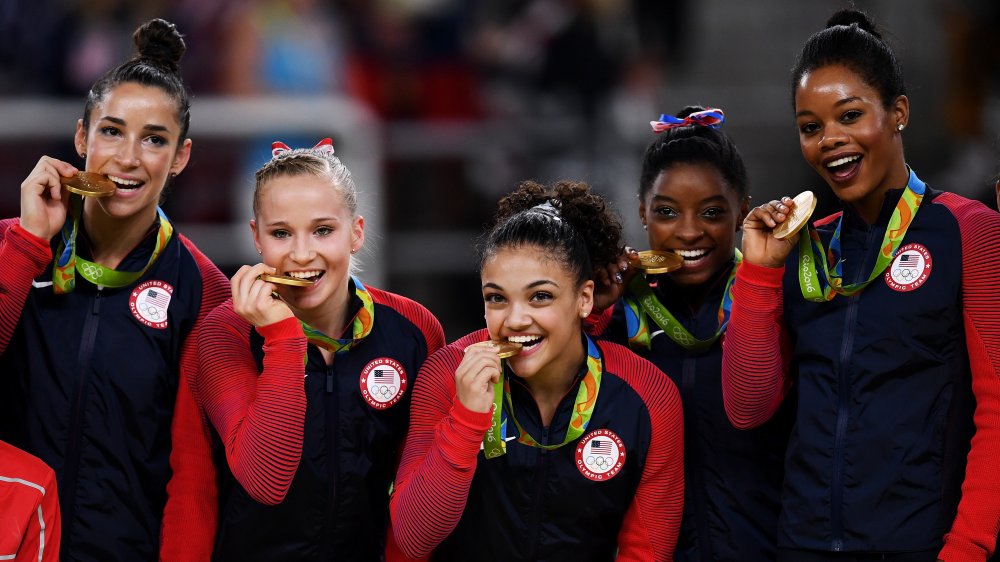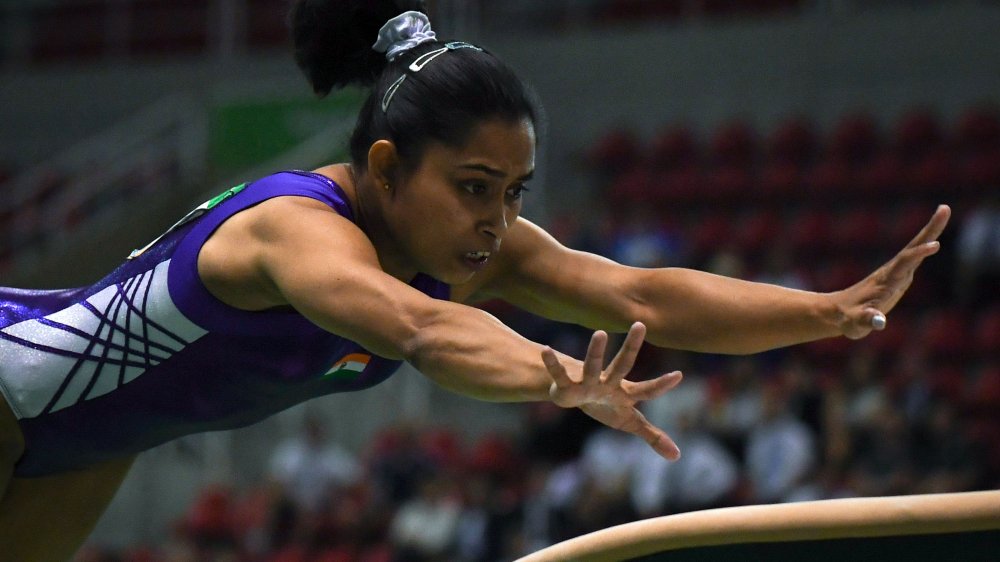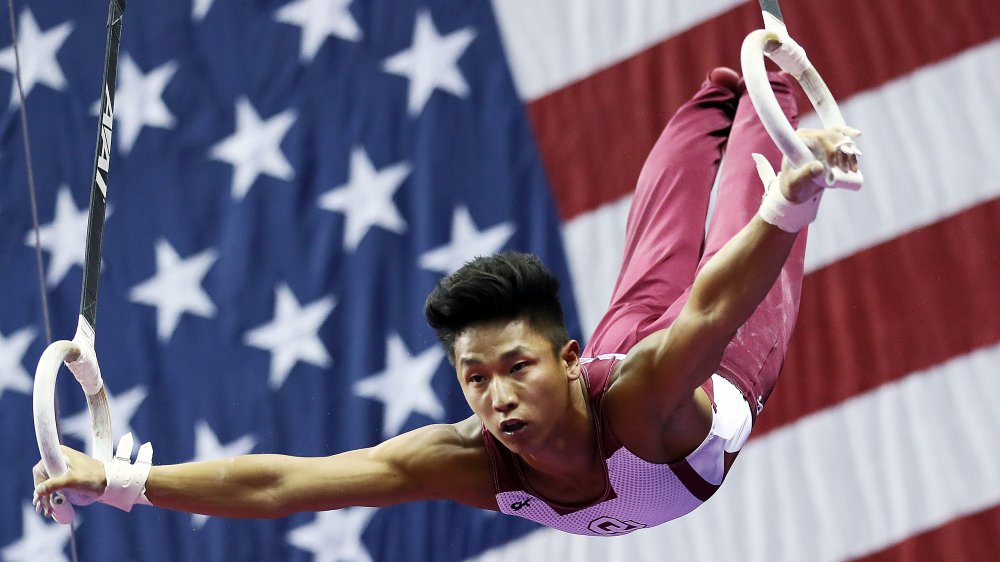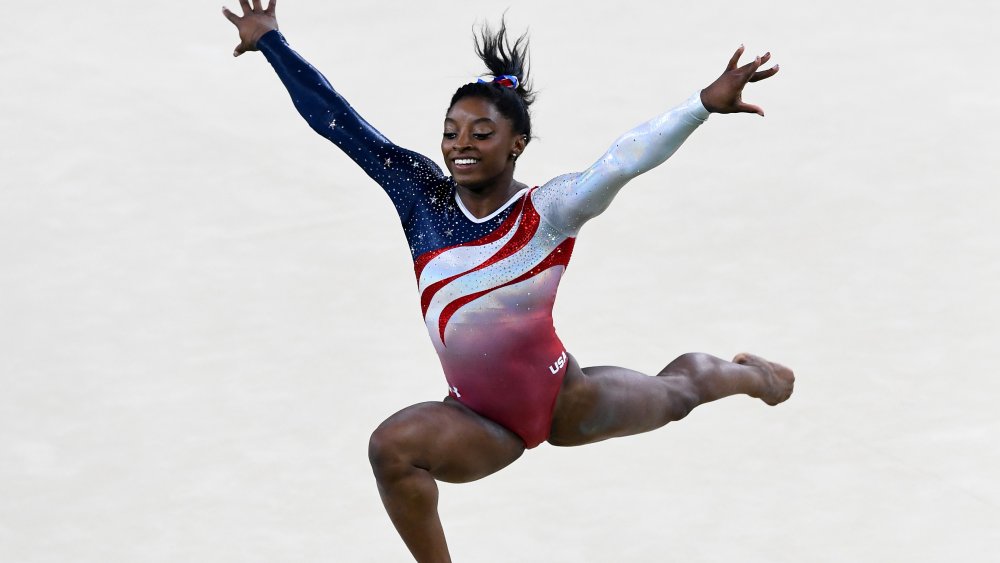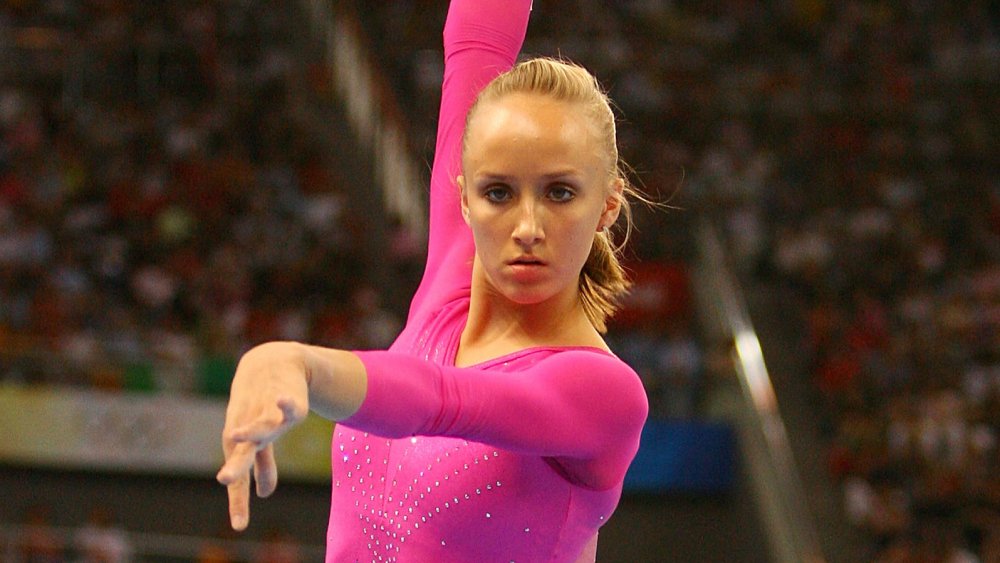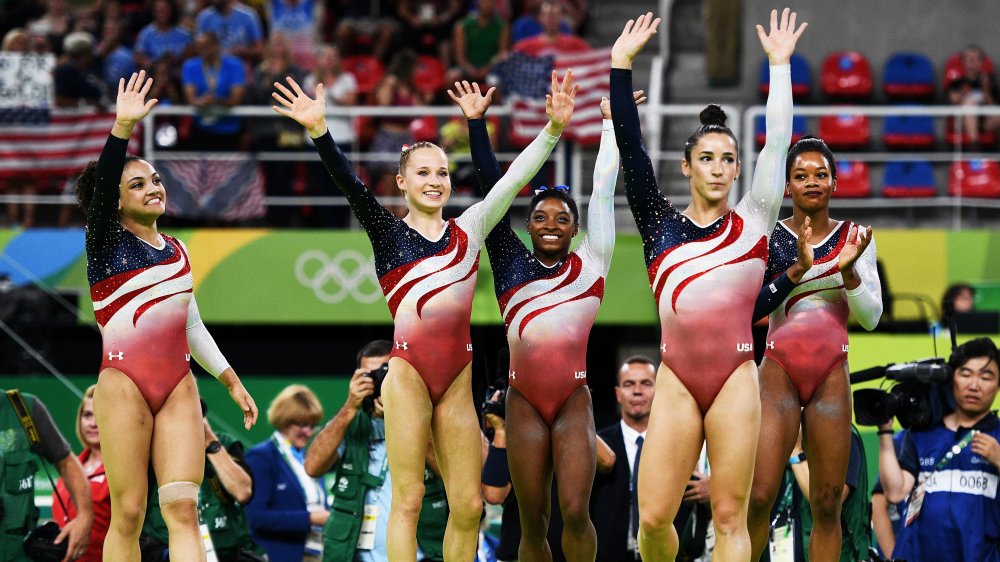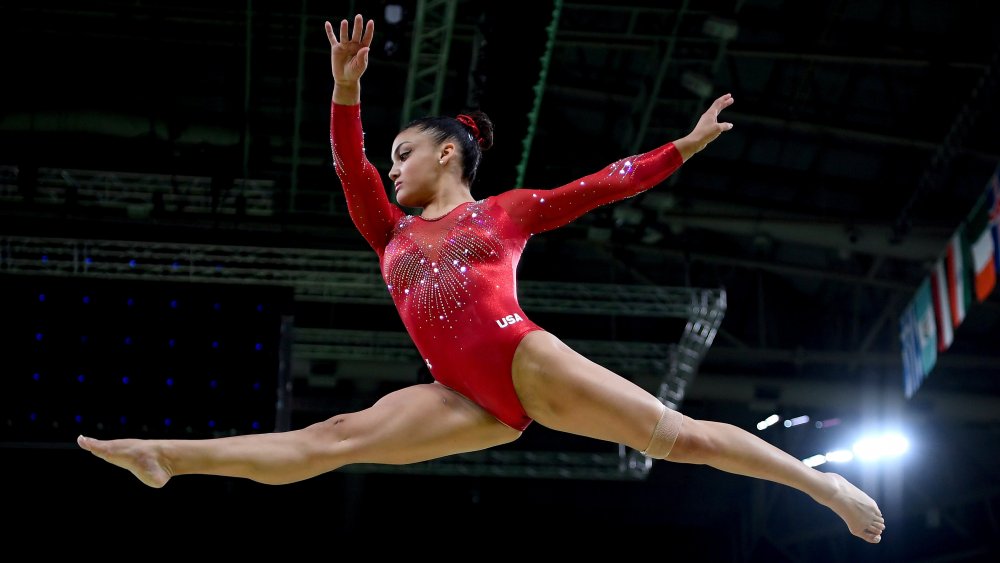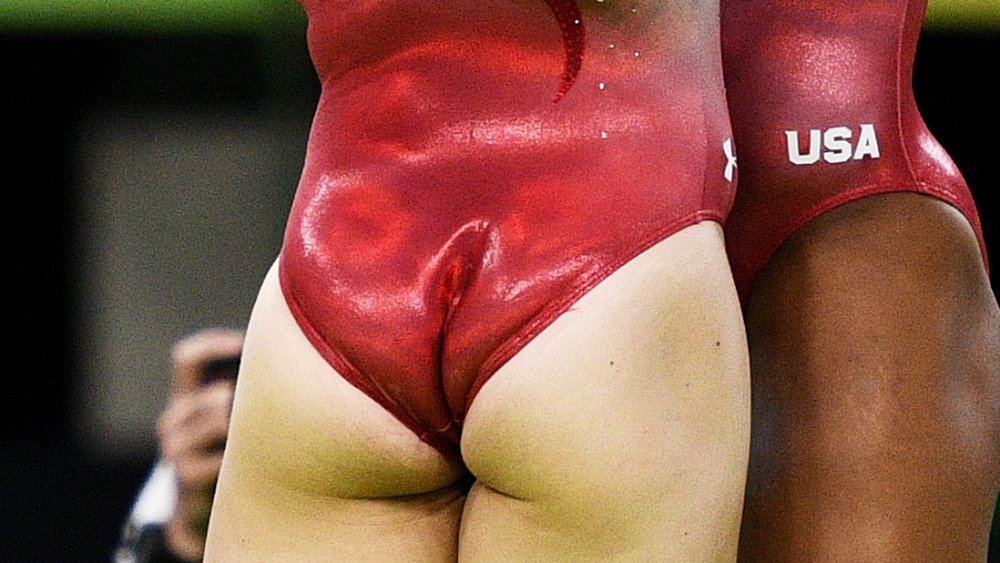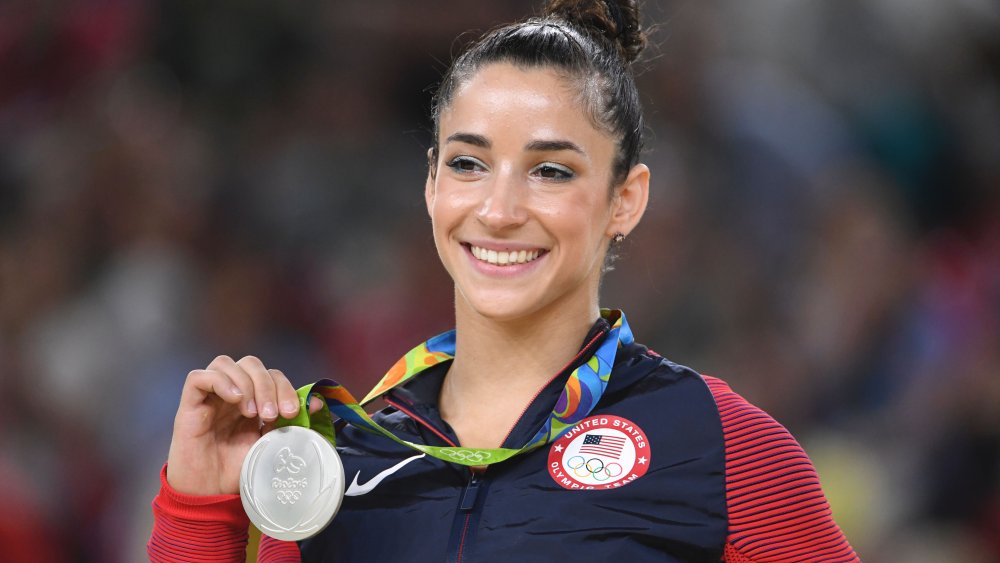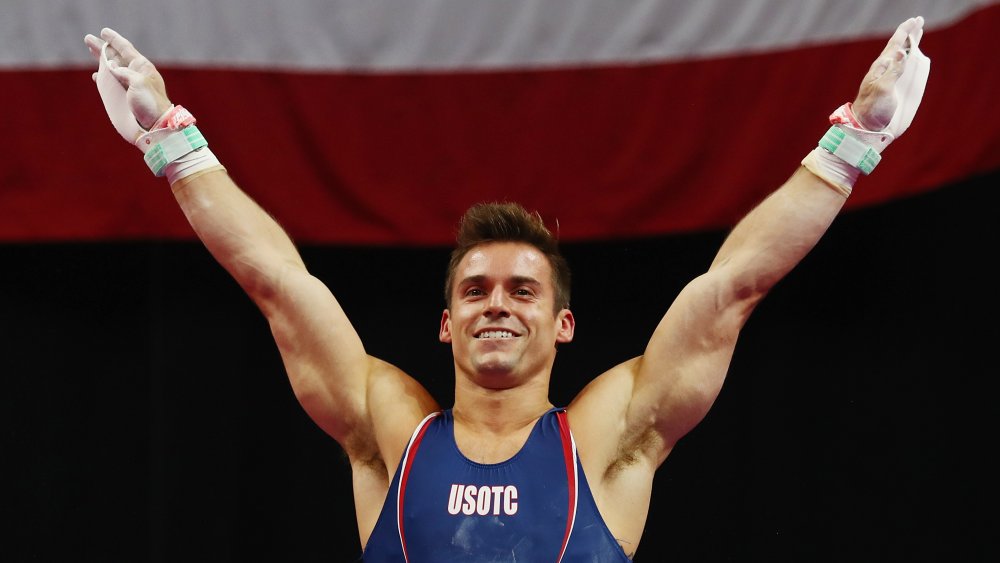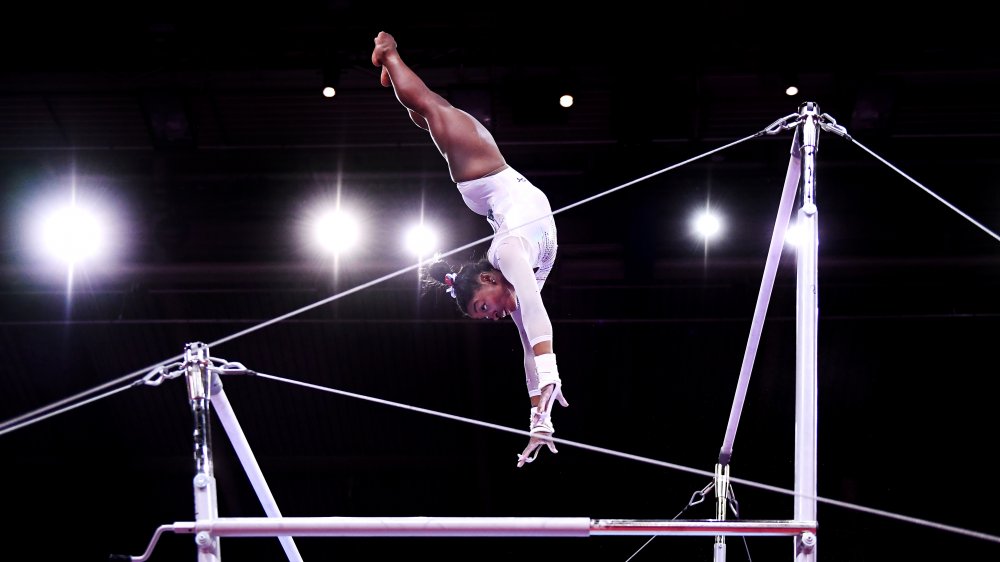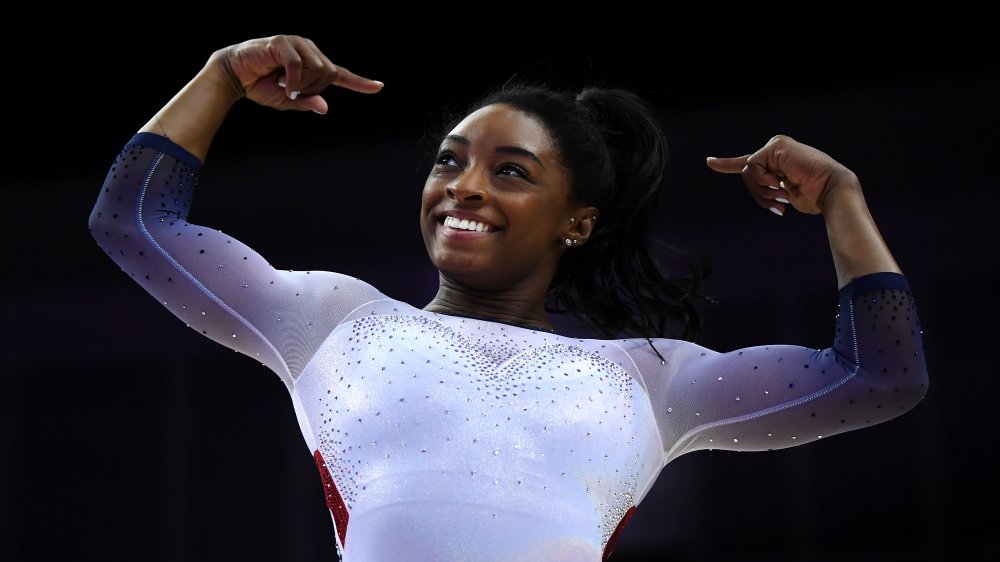Strict Rules All Olympic Gymnasts Have To Follow
Olympic gymnasts perform stunning feats that push the limits of physical ability, impress judges, and thrill spectators. But in order to be one of the top athletes in the world, they not only have to have an extraordinary level of talent, but also have to be incredibly disciplined and willing and able to follow various rules.
In 2018, record-setting competitor and Olympic "legend" Simone Biles talked with The Guardian about getting back into her grueling training routine after taking a break from the unyielding world of gymnastics: "It's hard mentally and physically. I remember some of the days I'm like: 'Why am I here? What am I doing? What did I do?'" Despite the fact that it requires a rigid level of restraint to ensure that they stay in line, the sports star admitted, "But in the end it's all worth it, so I'm happy with my decision to return."
While Biles may be willing to deal with the daunting demands that are put upon those who master the mats and dominate the uneven bars, you still might be surprised to find out how these top athletes have to look and act if they want to get the chance to compete for bronze, silver, and gold. Check out the strict rules Olympic gymnasts have to follow.
Olympic gymnasts must stay away from illegal moves
There are certain moves in gymnastics that are banned — and performing one during a routine can mean big trouble, usually because they are considered to be too dangerous. That's why competitors need to stay away from moves like the Thomas Salto, which left Elena Mukhina quadriplegic when she landed on her chin before the Moscow Olympics in 1980.
They also have to avoid the Korbut flip, which was performed many times by Olga Korbut, including at the 1972 Olympics. "The skill is executed by standing on the high bar facing the low bar, jumping backward into the air, doing a backflip, re-grabbing the bar, and ultimately swinging towards the low bar," according to Flo Gymnastics. "While traditionally done on bars, the Korbut Flip also had a beam variation, done by completing a back handspring with a high flight in the beginning, then swinging down to a straddle position on the beam."
In 2016, Olympic gymnast Dipa Karmakar talked to BBC News about attempting another extreme move, the Produnova, which Seventeen explains meant that she "rotated 900 degrees, or two-and-a-half flips, just barely spinning fast enough to land safely on her feet. ... The stunt is ... so terrifying that only a handful of athletes have ever attempted it." Karmakar even admitted, "One wrong move and I could die on the spot."
Meanwhile, Simone Biles stays away from banned moves altogether, telling Vogue's 73 Questions, "It's illegal, so I've never tried one."
Gymnastics pro tip: always look like you're in control
Even if they're tackling incredibly difficult routines, Olympic-worthy gymnasts have to make sure that they look like they're in control at all times. If they make a mistake — no matter how devastating — they're not supposed to react to it. It's even part of the scoring.
USA Gymnastics lays out the expectations put upon the athletes during competitions, explaining that routines "should be executed with proper rhythm and harmony." The website notes that the "best routines ... will look near-effortless to the spectators." USA Gymnastics also states, "It requires beauty, strength, power, and stamina to continue at peak performance throughout the entire exercise." That's why the "athletes must maintain energy and excellence, which can be challenging because of the demanding content in the exercise."
While it's a necessary skill, it isn't one that all competitors can achieve. "There are plenty of gymnasts who try hard skills and look as if they're inches away from death while doing them," according to USA Today writer Nancy Armour. "Go watch some of the scary crashes on vault and you'll see exactly what I mean." Or just try to do a somersault and see how hard it is. Or maybe you shouldn't — even a somersault can be risky to out-of-shape, unflexible, non-Olympian, normal folks.
Shh ... gymnastics routines are kept secret
A gymnast's routine obviously needs to impress the judges if the athlete wants to walk away with a medal, especially at the Olympic level, and that won't happen if the experts handing out points already know what's about to happen. Not to mention the fact that it would be disastrous if another competitor stole a few key moves — have you seen the chaotic (if fictional) circumstances that occur in Bring It On when routines are stolen and duplicated? That's why gymnasts are expected to keep their routines a highly guarded secret. Those who break their silence not only risk losing a competition, they're also breaking an established rule.
The International Gymnastics Federation, the worldwide governing body for the sport of gymnastics, addresses the tight-lipped nature of training in the FIG Code of Conduct, which all gymnasts are meant to follow. It states that competitors are expected "to respect the confidentiality of information between athletes and coaches."
Need proof of this? When gymnastics superstar Simone Biles took a camera along to her Olympic training facility in order to do a "73 Questions" interview with Vogue in 2016, she was asked if she keeps her routines a secret before a meet and responded with a simple, "Yes." When the interviewer asked if they could stick around to watch Biles' routine, she turned him down, stating, "No, because it's a secret."
Olympic gymnasts have to stick to specific grooming
There's a reason why Olympic gymnasts always look pristinely put together when they're competing. According to Vogue, the official USA Gymnastics rule book deems that women gymnasts must be "well groomed in [their] appearance." Noting that the "bevy of regulations ... walk the line between preference and precaution," Vogue explains that spectators "see a parade of tight braids, buns, and ponytails, for example, because hair has to be pulled away from the face lest it obstruct views of an apparatus necessary for spotting precarious landings — although there's no quantitative limit spelled out on bobby pins and elastic bands."
As for jewelry, competitors are only allowed to wear a single pair of stud earrings. "You can only wear earrings. Nothing else," Olympic Gold Medalist Nastia Liukin explained to People. "It's not allowed, but also you don't want to get in the way of anything that you're doing. Like when you're on the uneven bars you can't be wearing a ring because you just can't." When it comes to nails, Liukin said, "It depends on what your head coach likes, and what they don't like. I'm pretty sure [U.S.A. head coach Marta Karolyi] prefers us not to really have a bright red or a bright blue or pink or purple. I think something subtle was always good. I always had like a light, light, light pink on my toenails and then nothing really on my nails." Nailed it.
Their leotards have to be approved
Olympians are free to express their personal style in their daily lives, but when they're competing, gymnasts have to wear outfits that follow specific guidelines and are approved by their coaches.
"Leotards which have some part in lace will have to be lined (in the area of the trunk)," according to USA Gymnastics, while "the neckline of the front and back of the leotard must be proper (no more than half of the sternum, no more than at the lower line of the shoulder blades)." Meanwhile, "Dance leotards with narrow straps are not allowed." The website also stipulates that "the cut of the leotard at the top of the legs must not go beyond the fold of the crotch," and that it's considered to be "inappropriate for leotards to give the appearance of excessive nudity." If you've ever wondered why each member of a gymnastics team is dressed the same, the rules state that "leotards for group gymnasts must be identical in shape and color."
For her part, Nastia Liukin told People, "Before every competition we do a little fashion show in the hotel or the [Olympic] Village and it's with [Coach Marta Karolyi] and all of our coaches. We all have to try on the same leotard and we march down the hallways as if it's a runway and that's how we figure out which leotard we're wearing for the team competition."
While the leotards are certainly snazzy, they're also incredibly regulated.
Olympic gymnasts' undergarments can't be seen
Even though gymnasts wear form-fitting leotards while competing, their undergarments — including underwear and bra-straps — can't be seen, even if it's an accidental slip. USA Gymnastics guidelines explains that it's inappropriate to display "bikini lines, plunging necklines, [or] lingerie/underwear." In order to prevent an Olympic wardrobe malfunction while doing all kinds of twists and flips, Cosmopolitan notes that the gymnasts get "custom bras and briefs to wear underneath their leotards," which "are essential because exposed underwear can result in a deduction at competitions like the Olympics."
The leotards are also designed to prevent unfortunate incidents. Chief Design Officer Kelly McKeown of GK Elite (which has been responsible for making Team USA's Olympic outfits since 2000), told Cosmo that it takes two years to create leotards that can handle the demands put on the fabric during intense routines. "There's a lot of research and development that goes into it. It's something you don't want to rush," she said. "If you want to use a new technique, if you want to experiment, then you have to wear-test it, you have to wash-test it, you have to make sure that it's not going to fail on the competition floor."
Despite all of this effort to keep things in place, some gymnasts simply choose to ditch their underwear so that they don't risk losing points over the fact that their panties are peeking out.
They can't fix a wedgie while competing
Along with not being able to expose their underwear, Olympic gymnasts can't fix their wedgies if one happens to occur. This is another time when the perfectly designed leotards are helpful. "The athletes have such extreme body types that there is no way we could just cut a standard pattern," Kelly McKeown told Cosmopolitan. That's why each leotard is custom-made to fit the athlete's body, which prevents it from shifting — sometimes inappropriately exposing body parts — when the gymnasts perform their body-manipulating moves. "For example, Simone Biles is incredibly muscular, but she's a mighty little package, so she has big shoulder and very little hips, so literally every part of her leotard is custom."
Nastia Liukin told People, "You're not allowed to [pick a wedgie] or else you get deducted. So a lot of people use like sticky spray [called Tuf-Skin] for your butt so your leotard doesn't move. I've never used it and I know most of the girls don't really use it ... but if you have a fall and your leotard goes up your butt, you don't want to fix it in the middle of your routine. Off to the side, it's totally fine."
The next time you get an inconvenient wedgie, imagine what it must be like to experience one while competing for an Olympic medal.
Olympic gymnasts have to pay if they want to appeal their score
If a gymnast disagrees with the score(s) given to them, they can submit an appeal. Of course, there's a rule about the specific process that has to be followed, not to mention the fact that it can end up costing quite a bit of money.
If a competitor wants to challenge a score, their coach must first head to the judge's table before the next routine starts to verbally state their objection. They then need to submit the appeal in writing within four minutes. The coach also has to hand over $300. To challenge a second score during the same event, it will put them back $500, and a third challenge costs $1,000. If they win the appeal, they get the money back. If they lose the challenge, they also lose the money. The Wall Street Journal explains that the "set-up [is] designed to discourage frivolous objections."
If you're wondering if challenges ever happen, they do indeed. "In the beam final at the 2012 London Olympics, [Aly] Raisman's initial score left her in fourth place, just one-tenth of a point away from the podium," according to NBC Olympics. But after a challenge was submitted, "[Raisman's] revised score flashed above the arena — they accepted her appeal, and she was now tied for third with Romania's Catalina Ponor. But since her execution score (which remained unchanged) was higher, she won the tiebreaker and the medal."
There's no bullying allowed
Olympic gymnasts may be expected to be fierce when it comes to competing, but they're also expected to make sure that their behavior — either on or off the floor — doesn't turn into bullying. The code of conduct from the International Gymnastics Federation states that the athletes must "maintain and enhance the dignity and self-esteem of others by demonstrating respect for others, at all times, regardless of race, color, gender, sexual orientation, language, religion, political or other opinion, national or social origin, property, birth, disability, physical attributes, and athletic ability or other status."
It also ensures that the gymnasts "contribute to a harassment-free environment" and "refrain from any behavior and language that constitutes harassment, or physical abuse, is offensive, racist, sexist, unwanted, degrading, or malicious." Beyond that, "All statements and other forms of communication about others [must be] factual and/or not deliberately hurtful including all forms of social media." This surely helps during competition time, during which US Olympic gymnast Sam Mikulak once said, "It can get lonely."
When it comes to Team USA, Aly Raisman told E! News in 2016, "We all support each other, we all have fun, I know that sounds cheesy. People don't always believe it, but we know that we're happy, we know that we love each other so that's all that matters." It sounds like bullying isn't a worry when it comes to the American Olympic gymnasts.
Practice, practice, practice makes perfect
In order to be the best of the best, you have to train hard. Former Olympic gymnast Shannon Miller told HuffPost, "There are no limits on your dreams if you're willing to work for it." That's why those who want to be Olympians must agree "to follow a mutually agreed upon training plan which is compatible with education, career, and family life," according to the International Gymnastics Federation.
In order to earn her spot on Team USA, Simone Biles trained around 32 hours a week. In 2016, she told Women's Health about her daily routine: "In the morning, I usually get up between 7:40 a.m. and 7:45 a.m. ... I have practice from 9 a.m. to 12 p.m." She added, "[I then] head back to the gym from 3 p.m. to 6 p.m. and usually have more routines. After that, I either have therapy at the gym or at home ... and do it all again the next day."
Biles offered more details, saying, "Last year we did cross-training. We swam twice a week — almost a mile! I swore I was going to drown, it was so hard, and then we would run. And the year before that we would bike 10 miles outside once a week. If we didn't bike, we would run a mile before practice, and as soon as we finished the mile we'd have to go inside and do a beam routine. My legs were absolute jello."
Olympic gymnasts must follow a specific diet and clean lifestyle
Along with putting in plenty of practice to keep their bodies in tip-top shape, Olympic gymnasts also have to watch what they put inside of their bodies, whether it's food, drinks, or other substances.
In order to get the fuel that they need to perform at the levels that they do, Olympian gymnasts have to follow a strict diet. In 2019, Simone Biles shared with Well and Good what a typical daily menu looks like for her, revealing that she relies on foods that are high in protein and fiber and low in carbs. The world-class competitor starts her day with a protein waffle and some fruit for breakfast, followed by a lunch that's "usually chicken and some vegetables." For dinner, she "like[s] to eat fish with vegetables and rice," and if she gets munchy between meals, her "go-to healthy snack is plantain chips."
The International Gymnastics Federation also ensures that its athletes stay away from performance-enhancing drugs and "abstain from the use of alcohol," as well as "illegal substances." A competitor who's trained for years to reach the Olympic level would surely not want to risk their career by attempting to perform after a few too many shots of tequila or an unwise amount of wine. But just in case they're tempted, the rule is there to make sure that gymnasts stay away from iffy substances and are always ready to compete.

